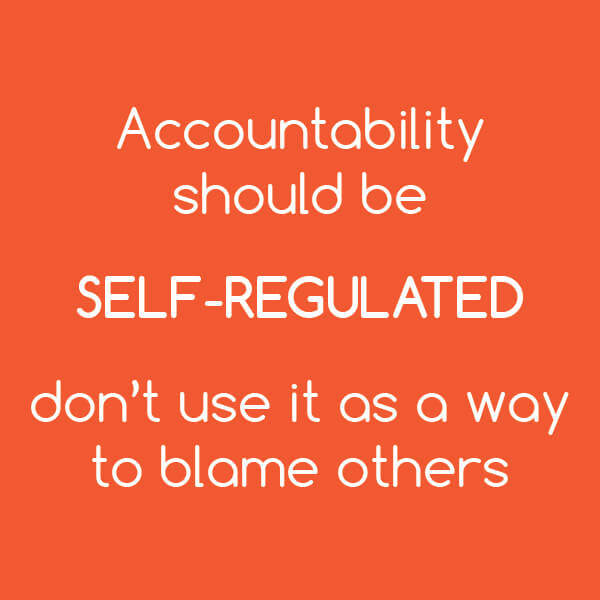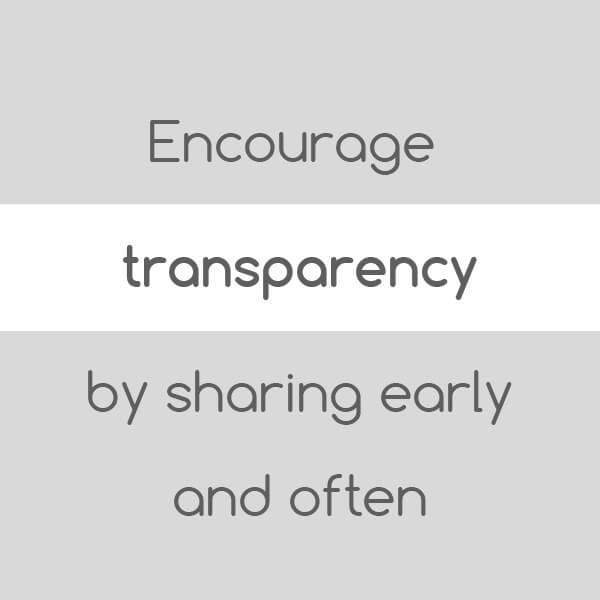You can learn to do the best by seeing the worst. Because of the number of leaders I work with across numerous organizations, I see a lot that frustrates me with bad leaders.
These habits impact everything from morale to team performance. Learn from them!
14. Bad Leaders Blame People They Lead
Bad leaders are great at throwing people under the proverbial bus.
A leader’s role is to protect and grow those she leads. In 23 years of leadership, I cannot ever recall publicly blaming a colleague for something that has gone wrong. As a leader, I am the single point of accountability.
That does not mean that I do not have numerous internal conversations with the people involved to establish a plan of prevention. However, I will not publicly blame anyone but myself.
When I see other leaders immediately pass the blame to those they lead – especially to leaders of leaders – it downright makes me mad.
Bad leaders blame their teams. Own it and be accountable as the leader.

13. Leading by Fear
These are the worst of bad leaders. One of the goals of leadership is to build confidence. You cannot build trust with others when they are scared of you.
What happens? A hot mess of plummeting team performance.
Eventually, team members stop giving the leader vital information needed to succeed. They are afraid of the public and private lashing or consequences. Who blames them?
A leader who primarily ‘influences’ with fear is one of the most destructive people in any organization of any size. It can spread like wildfire and causes overall chaos – mainly due to communication barriers to vital information.
12. Bad Leaders Have No Desire to Lead
Many people do things for the wrong reasons in their careers, including accepting a leadership role. A recent article I wrote on why great leaders are born explains this in more detail.
Many professionals accept a leadership position for the wrong reasons. Ultimately, they are not only bad leaders; they never grow to be good at leadership.
More importantly, they are not happy as leaders. Being happy as a leader is a key to becoming successful in leadership, so assess your ‘why’ in wanting to be a leader.
11. Not Setting Clear Expectations
The setting, revising and emphasizing clear expectations is vital to team performance. Bad leaders tend to send mixed messages on priorities.
Constantly manage and communicate expectations – especially relating to performance and objectives. This is critical during times of business change and transformation.

10. Bad Leaders Develop Unnecessary Process and Rules
Bad leaders focus more on what NOT to do than what needs to be done. This usually comes from a lack of trust and is a breeding ground for micromanaging characteristics.
Rather than increasing operational business process, focus on empowerment and what each individual CAN do especially around their strengths. This will go a long way to boosting not only team performance, but also the innovative potential of the organization.
9. Unproductive Meetings
There is nothing like sitting on a worthless, standing status call when you could be doing a million other things. Bad leaders THRIVE on standing meetings because they give a sense of control.
These meetings are interrupting to productivity and normally provide very little substance. Design meetings to be motivational, interactive and collaborative and be thoughtful of everyone’s time and priorities.
8. Lack of Follow-Up and Follow-Through
Don’t be the one that has a reputation for introducing the ‘flavor of the day.’ Don’t initiate new programs or initiatives only to abandon them because of something, somehow becomes more important. Bad leaders do this all the time, and it crushes morale and team performance.
If you say you are going to do something, then DO IT! Set and manage expectations on accomplishments, tasks, and initiatives.
People want to feel like they are working towards something, not running in circles.

7. Constant Change
Reacting to unnecessary and unorganized change is frustrating and unproductive. Some leaders start changing things just to change them and have no real explanation as to ‘why.’
Consolidate change messages to your team. Too much at once can be overwhelming and seem impossible.
Part of your job as the leader is to provide structure and stability.
6. Bad Leaders are Hypocrites.
If your mantra and leadership style is
Do as I say; not as I do.
then you might want to stop wondering why you have a hard time inspiring people towards hitting team performance goals.
Lead by example and treat others consistently, but personally. Never go the route of trying to standardize behavior, as it only turns into a complete disaster. People are people and treat them as such.
> Curious as to what leadership approach you gravitate towards? Take this leadership style questionnaire after you are done reading this article.
5. Being Secretive
Not everyone needs to know everything, but not everyone needs to know that you know something they don’t either. The more people know you are keeping something secret, the less they will trust you.
Bad leaders LOVE to advertise that they know something that YOU want to know.
Be open and honest within confidentiality standards. Be as transparent as possible while still keeping your clothes on (that’s really an HR thing). Give the right information at the right time.

4. Discouraging Responses and Communication
Bad leaders want you to tell them what they want to hear – not what they need to hear. How do they condition you to do this? By giving negative, unconstructive verbal or nonverbal feedback to you. This is why these leaders rarely last.
Allow open and honest communication in coaching sessions and team meetings. Encourage and reward active participation. The information you receive is vital to your leadership and career success. Have a robust set of internal communication tools and process to support collaboration and transparency.
3. Taking People for Granted
We all have things that we take for granted now and again. However, bad leaders have a habit of neither recognizing nor acknowledging employee contributions. What happens? People just stop trying because they feel like the effort doesn’t matter.
Use motivators and incentives correctly and consistently. Be creative and inclusive with the programs you develop to showcase your rising and shining stars.
2. Bad Leaders are Invisible
Bad leaders hide behind closed doors. When people don’t know who their leader is or feel that leadership doesn’t know employees, there is a big problem.
Be visible! Walk around. Talk. Be seen! You are the star and work it down the cubicle runway on a regular basis.
1. Building Too Much Internal Competition
There is nothing wrong with a little friendly competition until it gets way out of control and becomes backstabbing at work. Leaders who instill this type of culture are often insecure – and usually in their ability to lead and stay competitive themselves.
Too much competition reduces collaboration, influence, and trust, all of which are critical to innovation.
Avoid and discourage finger-pointing internally to the team, amongst other teams and functional departments.
Final Thoughts
Use these examples of the worst of bad leaders to do the opposite and build yourself to be a great leader! I’d love to hear any other examples or questions you might have. I’ll be listening over on Twitter and Facebook.
Don’t forget to hit the subscribe button above to get all our best business and career insights delivered directly to you!
Keep Reading: Want to Build an Engaging Workplace Culture? 10 Employee Questions You Should be Asking.
Working with bad leaders? Need some help with your leadership approach? We can help.
Kris Fannin
Kris Fannin is a passionate change agent in workforce transformation. For more than 25 years, he's had the privilege of partnering with dozens of client organizations and leading hundreds of teams to become powerful influencers.
"Your legacy will be defined by the passion and impact of the people you influence. What do you want your legacy to be?"



